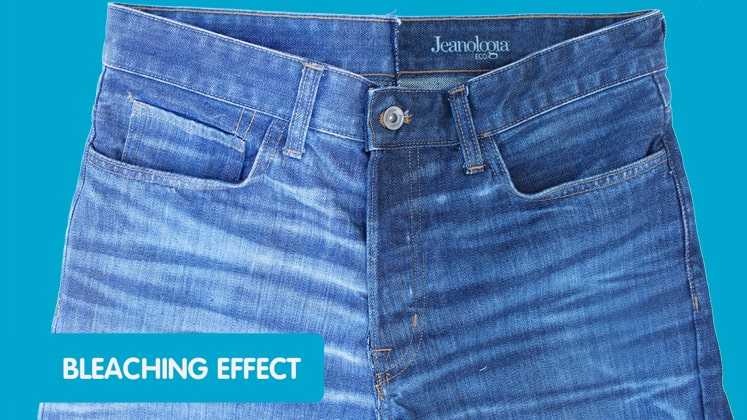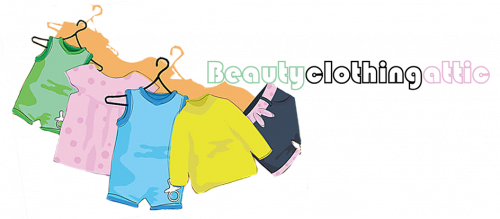
Denim is one of the most classic styles in the fashion cycle, whose demand never goes out of style. Faded blue jeans are loved by everyone, but very few are aware of the harmful environmental consequences involved in its manufacturing. It involves a huge usage of water, energy and intensive chemicals after which the desired finishing is obtained. In order to reduce the amount of pollution and the use of water, energy and chemicals that denim industry involves, the technology suppliers have come up with sustainable solutions . This article will talk about these sustainable finishes, like Laser, Ozone ,etc., which are bringing a change in the apparel industry.
The basic denim has many twists in its look and style for which it has to go through a number of washes and finishes that finally gives it the desired look like faded, distressed, washed, printed, etc. The distressed denim look is obtained after several chemical-intensive washes while the printing and dyeing involve heavy metals like cadmium, lead and mercury which are too dangerous if it comes into contact with the human skin.
The earlier processes of obtaining these looks like a stone wash, mill wash, moon wash, bleach distressed look, whisker look, 3D effect, sandblast, etc. are the ones that involved the maximum amount of water and chemicals in their process. However, for the need to create a change for the sustainability of living beings and environment, there are new finishing techniques like Laser, Ozone, Water Jet Fading, NoStone® wash being introduced that have reduced the use of water and chemicals involved in the process. Also, today companies like Jeanologia and Tonello are providing the right machines for the sustainable manufacturing of denim. These new sustainable finishing and machines are much ecological and economical.
Ozone Fading
Ozone possesses the power similar to the bleaching agent, being generated from oxygen. This is being used in replacement to the traditional bleaching process used to decolour indigo. The use of bleaching agent involved the use of heavy chemicals like sodium, hypochlorite, hydrogen peroxide and potassium permanganate. The continuous exposure of these chemicals is harmful to the workers, can cause corrosion in the machines and can make the fabric weak.
Ozone reduces the amount of water, energy, chemicals, enzymes and stones. In the process, oxygen is converted to ozone gas, and denim is dampened and exposed to the ozone and rinsed. This ozone is reconverted to ordinary oxygen before releasing into the environment. The process requires only two to three processes while the traditional involved six to seven washes and rinse. The process takes much lesser time to be completed, with just 15 minutes to achieve the desired result in comparison with the 30 to 45 minutes with the traditional process. This increases the production per shift while reducing the environmental impact, cost involved and processing time to achieve the desired output.
One of the leading technology suppliers for the same is Ozone Denim Systems whose machines utilise the patented earth-friendly ozone instead of bleach and water. The machines feature a patented OLS system for the safety of the workers with a unique design of 1 to 5 vacuum that continually re-circulates the ozone through the washing chamber. The failsafe system sucks any potential leaks into the washer chamber because of the negative chamber, while the entire unused chamber is evacuated through the positive exhaust and ozone destruct system. The company offers machine model ODS 100-300 with different production capacities to meet the different needs of the users.
Another such brand providing the machine is Jeanologia G2 series technology certified as ecological and safe by an independent laboratory, for Ozone washing. The machines are equipped with x-arc generators which work by taking air from the atmosphere and transforming it into ozone, thus liberating the particles inside the tumbler to produce results, such as the elimination of indigo dye excess or the reproduction of the bleaching effect to give garments the real look of outdoor usage. The process is accomplished with a zero discharge process, which utilises no water and chemical. It also reduces the number of steps involved in the production of denim and knits. The G2 Cube machine allows the industrial production with the dry and wet garment, while in the dry process, the ozone effectively cleans the garment, improving the whiteness of used area and eliminating the back staining. While applying ozone on the wet garment, the bleaching effect can be obtained without any chemical. The machine with a loading capacity of 100/130 kg, can produce ozone for 1,000/1,200 g/h while consuming the power of about 23.8 kW.
The process to convert back the ozone into oxygen takes a few minutes, similar to the charging and discharging of the garment. G2 Twin machines by the company are designed for maximum power and production which connect two G2 Cube with one ozone generator. The x-arc generator is always generating and providing ozone to one of the tumblers while the other has finished one cycle and is being prepared for the next one.
Laser Wash Finishing
The apparel industry has been using lasers for a number of operations starting from laser marking, for surface fading; laser welding for joining two or more layers of fabric through melting, laser engraving, controlling cutting to a depth, laser cutting, for cutting through the fabric. The technology works with the generation of an intense beam of coherent monochromatic light by stimulated emission of photons from excited atoms and molecules. Textile industry majorly uses the CO 2 discharge excited laser sources, with a wavelength of around 10.2–10.8 µm. The technology has found its application in the denim finishing for discolouration, abrasions, decoration, marking, engraving and cutting.
The use of this method can perfectly replicate the effects that are created using the traditional methods of stone wash, mill wash, moon wash, bleach, PP spray, monkey wash, cat whiskers, snow wash, etc. Giving a similar distressed look, it almost eliminates the use of any water and chemical that was used in these processes. Laser wash also allows early production lowering the production time as it eliminates the need for multiple wash stage lowering production time. The reduced number of processes also eliminates the amount of extra labour and process cost, reducing the production cost exponentially. Moreover, the process is more precise, uniform and defect-free as the designs can be placed anywhere on the garment depending on the requirement. One of the most well-known technology suppliers for the same is Jeanologia, who with its laser-based finishing technology for denim creates a sustainable solution for the same process. The sustainable technology solution provider has offerings like Flexi Pro, Twin Pro, Flexi Lab, Nano Shop and Nano Industrial that help manufacturers to obtain the same distress look using a sustainable technique. The machines meet the requirement of different clients ranging from small production (1,000 garments per day) to large manufacturers with laser able to produce 4,000 garments per day. These machines feature a patented High Dynamic Range (HDR) which simplifies and reduces the time in the design process by up to 30 per cent. The system also increases the contrast of the dynamic tones of the image, obtaining the level of depth closer to the reality and thereby achieving a more natural, authentic and 3D design.
Moreover, the Nano range delivers the most detailed effect in microbreaks, local damage and pocket details as well as tags and labels. The solution allows customisation of jeans according to the users’ choice. Moreover, in order to reduce and simplify the pre-production process, the company provides its own patent software called E-Market. Equipped with a large laser design gallery, which is constantly updated by the Jeanologia brainbox team helps with the designing of denim with trendy and exclusive laser designs. The eMark Light tools improve industrial productivity, whilst ensuring energy-efficiency and friendliness to the environment and humans. With light tools, it is possible to get looks with breaks (light ripper), create authentic virtual slubs avoiding the hand sanding process (light scrapper) and also to get them used effectively without harmful potassium permanganate spray (Light PP Spray).
Another such promising brand is SEI Laser, a leading Italian laser technology, design and manufacturer integrated solution provider. The latest introduction by the brand Flexi Denim is a modular and flexible system for mass production. The technology can be custom configured to meet the needs of customers at the time of purchase and upgradable later with additional options. The machine technology is based on CO 2 Sealed-off Slab RF discharge excited laser source with a wavelength of 10.2–10.8 µm.
The Non-Stone Washing

Tonello created abrasive stainless steel drum, which produces a similar effect of what traditional Pumice stones used to create for giving a faded, worn-out look to the fabric. These pumice stones are washed with denim garments together in large machines. These damaged the machines through wear and tear and involved high labour cost as all the residual and dust had to be removed manually. This innovation was created by the company in collaboration with Levi Strauss & Co.
The NoStone® system is based on a stainless-steel abrasive drum, which is fastened to the washing-machine cylinder. The mechanical process removes the chemical that is involved in lowering the carbon footprint (CFP) of pumice stone. The technology is developed and can be used with any Tonello machine to which it fits perfectly, maintaining the same load capacity. The lining can easily be removed, so the machine can be used for normal washing or dyeing processes. “The NoStone® solution reproduces the same effect of stone washing without the use of pumice stone. This is obviously translated into many advantages: it reduces water consumption, production costs, emissions, processing time and manual labour. It produces neither dust nor sludge and it doesn’t damage the machine as compared to the traditional method using stones. At ITMA, we’ve presented the newly redesigned version of the system called NoStone®+ where the process and effect on garments have been perfected, made faster and even more sustainable,” said Alberto Lucchin, Executive (Marketing), Tonello .
The rising concern of sustainability due to the alarming fact of the apparel industry has increased the demand for sustainable practices in the garment making process. Denim which alone consumes 11,000 litres of waters for producing single pair is a figure to be reconsidered when the water problem has already started in few parts of the earth. Also, the heavy chemical being used in its manufacturing is also polluting the water bodies making it toxic and unusable and creating danger for marine life. In such a scenario, there is an immediate need for the manufacturers to switch to the sustainable solutions of manufacturing the denim, as the responsible customers and the retailers will be demanding denim made responsibly. Few retailers have already started with the task, like HNST, a fully circular denim brand, has made denim out of the damaged denim, recycling it to a new one.

Leave a Reply